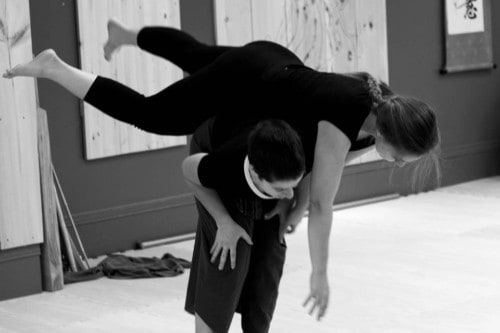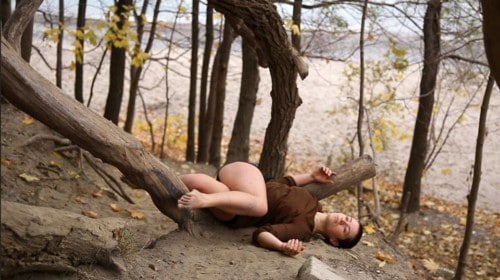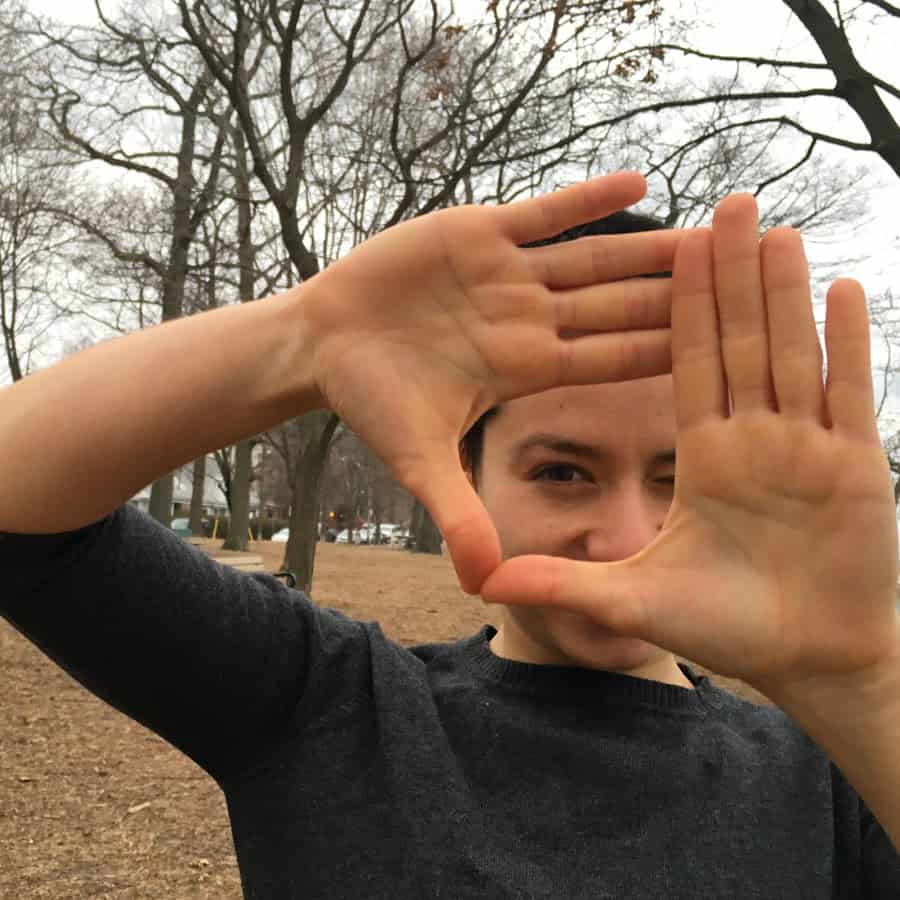Growing up in Ukraine, Olya Glotka was a sickly, weak child. Steered away from sports and strenuous activity, she was scolded for trying anything risky. For a while, she went to ballet school, but she hated it.
Then, when she was nineteen, she happened upon a YouTube video depicting Contact Dance, an improvisational style of movement whereby dancers maintain near constant physical contact – while lifting, falling, being upside down, rolling and putting weight on one another. Intrigued, she wanted to try too.
“When I came to the first class, as I was laying on the floor, a grown man twice my weight was throwing all his weight on me,” she explains. “And I didn’t die! My life changed from then on. I was so strong all of a sudden. Before, society – especially in Ukraine – was telling me, ‘You’re a weak, tiny girl. You shouldn’t do sports, you shouldn’t lift anything heavy.’ I learned that my body is so resilient, and my body is powerful.”
Olya began contact dancing seven days a week anywhere she could – indoors, outdoors, on the street. “I didn’t care what I looked like or what people thought,” she says. “It was such a switch for me from what I was like before. Contact Improvisation was the only thing to which I could credit this change. I decided to dedicate my life to the form.”

Invented by choreographer Steve Paxton in 1972, Contact Dance was conceived as a combination of martial arts and dance, with an emphasis on improvisation. It is “based on the communication between two moving bodies that are in physical contact and their combined relationship to the physical laws that govern their motion—gravity, momentum, inertia,” states the Contact Quarterly.
“It’s about trusting the body to take care of itself,” explains Glotka. “Generally, dancers are really careful with their bodies: they don’t want to hurt themselves and they choreograph and pre-plan their movements. Steve Paxton thought that you could put the body in a new situation, and if you could quiet the mind, then the body would automatically find a solution to the problem. Our bodies are so smart. Once you turn the mind off, your body will figure it out.”
The dance requires ongoing communication with your partner (or partners) – a communication that occurs without words. “There is such deep emotional and soulful connection between two bodies when they’re quiet,” she says. “It can be intimate, but it doesn’t have to be. It can be very sensual, or rough, or distant. It can be an angry fight, or it can be playful. You choose. You decide what it’s like. Nobody can tell you what to do.”

As a woman who struggled with asserting herself, Glotka believes Contact Dance has been transformative. “For other types of dance, as a woman, you’re supposed to follow. You’re the one who is lifted. In Contact Improvisation, there are no such rules. There is a flow where everyone gets to be a leader and a follower. As a woman, I can be in power. I don’t have to follow the men in my life, which has been a struggle for me before. It has helped me learn to say no.”
She realizes many people view Contact Dance warily, at first. “I’m sure when you look at it, it looks strange, or people think it looks inappropriate,” she says. “People decided that touching is inappropriate. We are so scared of it. I was scared of it. As a woman, as a young girl, I was inappropriately touched. It was triggering at some points.”
She believes that touch through Contact Dance can be deeply cathartic, helping to resolve deep-seated issues from the past. “It’s almost like I live it out through the dance,” she says. “It comes out through my body and I feel so much lighter afterwards. Touch can be healing and healthy.”
Contact Dance can be practiced by anyone, regardless of ability (or disability). “It can be by yourself , with a tree, with a wall, with the floor. Or it can be with three, four or five people,” she says. She especially loves dancing on the street, “because I love the city and I hate being indoors. I always promote self-expression in public places. Why do we hide our emotions?”
I wonder if gawking passersby put a damper on her improvisations – quite the opposite. “That’s what pisses me off the most!” she laughs. “People are so committed to getting to point B, they won’t even pause to say, ‘Look at this strange girl doing weird things!’ Here I am being vulnerable and opening up and sharing something, and people are actually scared to stop and acknowledge it.”
Olya’s films depicting impromptu dances in unconventional places will be screened at The Contact Dance International Film Festival (June 28 – July 2). CDIFF will also feature live performances, workshops, jams and most notably, films from 16 countries by 39 filmmakers with 143 dancers in locations including forests, subway stations and museums.



 Follow Us On Instagram
Follow Us On Instagram
